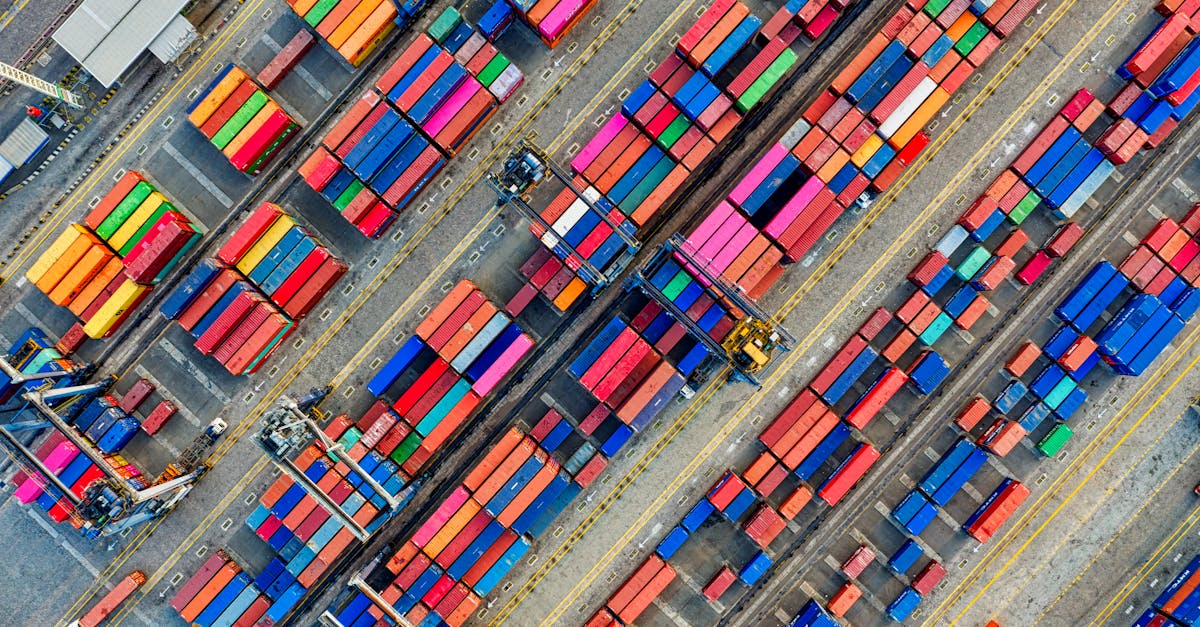Global Supply Chain Disruptions Challenges and Business Adaptations
Introduction
In 2025, global supply chains continue to experience unprecedented disruptions, challenging businesses worldwide. These disruptions, driven by factors such as geopolitical tensions, climate change, and technology shifts, have escalated since the early 2020s. As companies grapple with these complexities, they are forced to rethink traditional supply chain models and adapt to this evolving landscape. This article explores how businesses are innovatively adapting to these challenges, maintaining resilience in the face of uncertainty. With a focus on sustainability, digital transformation, and collaboration, businesses are tailoring strategies to navigate these turbulent times. Through this examination, we uncover the integral role of innovation in sustaining global commerce.
Advertisement
The Complexity of Modern Supply Chains
Today's supply chains are more interconnected and complex than ever before. With products often crossing multiple borders before reaching the consumer, even minor disruptions can have widespread repercussions. Geopolitical tensions, including trade wars and sanctions, contribute significantly to these complexities. Simultaneously, the global push towards sustainability pressures companies to adopt environmentally friendly practices, often requiring overhauls to traditional supply chains. Technological advancements present both solutions and challenges, as businesses adopt digital tools to streamline operations while also facing cybersecurity threats. Together, these factors contribute to a multifaceted problem that necessitates innovative solutions.

Tom Fisk/Pexels
Advertisement
Embracing Digital Transformation
Digital transformation has emerged as a cornerstone strategy for businesses adapting to supply chain disruptions. Companies are harnessing technology to enhance visibility, improve efficiency, and build resilience. The adoption of cloud-based solutions, IoT devices, and blockchain technology enables real-time tracking and transparent transactions, reducing the risk of fraud, errors, and delays. Furthermore, advanced data analytics empower businesses to anticipate disruptions and respond proactively. As AI and machine learning continue to evolve, their integration into supply chain management promises smarter decision-making and enhanced flexibility. This shift towards digitalization sets a new standard for efficiency and adaptability in supply chains.
Advertisement
Building Resilient Supply Chains
Resilience has become a pivotal objective for businesses facing ongoing disruptions. Companies are diversifying suppliers, regions, and transportation modes to mitigate risk. Multi-sourcing, or the practice of sourcing from multiple suppliers, reduces dependence on a single source and enhances resilience. Geographic diversification, especially nearshoring and reshoring, allows companies to bring suppliers closer to consumer markets, mitigating long-haul dependency. Moreover, businesses are investing in redundancy and backup plans to ensure continuity during disruptions. By embracing resilience strategies, companies position themselves to weather unexpected challenges and adapt swiftly to changes.
Advertisement
Sustainability as a Key Driver
The emphasis on sustainability continues to reshape supply chain strategies in 2025. Businesses are increasingly adopting sustainable practices not only to comply with regulations but also to meet customer expectations for eco-friendly products. From reducing carbon footprints through optimized logistics to utilizing renewable materials, sustainability informs every aspect of the supply chain. Circular economy models, which prioritize recycling and reusability, pave the way for minimizing waste and enhancing resource efficiency. Supply chain players collaborate to create sustainable networks, underscoring the notion that eco-conscious practices align with long-term resilience and profitability.
Advertisement
Collaborating for a Stronger Future
In the face of complex supply chain challenges, collaboration among stakeholders emerges as a powerful enabler of innovation and adaptability. Businesses, governments, and non-governmental organizations are forging partnerships to share insights, technologies, and resources. These collaborations promote standardization, enhance transparency, and facilitate the sharing of best practices. By fostering a culture of cooperation, stakeholders unlock new avenues for problem-solving and innovation. Industry-specific alliances further aid in addressing unique challenges, driving efficiency, and ensuring that supply chain practices align with global regulatory and consumer expectations.
Advertisement
Adapting to Unforeseen Challenges
Despite meticulous planning, unforeseen challenges can still emerge, requiring immediate and agile responses. Businesses that prioritize agility and flexibility can pivot swiftly, regardless of the disruption. Agile methodologies help teams respond to real-time changes, ensuring seamless operations during crises. Companies are training employees and investing in adaptive infrastructure to enhance responsiveness, minimizing downtime. The ability to rapidly recalibrate strategies and implement efficient workflows enables businesses to turn challenges into opportunities, securing their competitive position in the market.
Advertisement
Navigating Regulatory Landscapes
As globalization expands, navigating diverse regulatory landscapes becomes essential for businesses operating across borders. Different countries impose distinct taxation, labor, and environmental regulations that impact supply chain operations. To address this, companies are investing in compliance management tools and seeking expert legal counsel. Furthermore, digital tools facilitate real-time monitoring and reporting, minimizing the risk of non-compliance. Successfully adapting to regulatory changes allows firms to maintain operational continuity, fostering trust and credibility among stakeholders. Navigational capabilities in regulatory landscapes equip businesses with the new insights essential for their survival and growth.
Advertisement
Harnessing Innovation for Competitiveness
Innovation remains a key competitive differentiator within the dynamic landscape of supply chain management. Companies are leveraging emerging technologies such as 3D printing, autonomous vehicles, and drone deliveries to streamline processes. These advancements enhance agility, reduce lead times, and increase supply chain efficiency. Agile innovators adapt to changing trends more quickly, positioning themselves as market leaders. Additionally, entrepreneurial approaches to problem-solving and investment in research and development drive continuous improvement in supply chain operations. By harnessing innovation, businesses secure a competitive edge, establishing themselves as leaders in an evolving market.
Advertisement
Conclusion
As global supply chain disruptions persist, businesses are compelled to adopt innovative strategies to adapt and thrive. Key strategies include embracing digital transformation, prioritizing resilience and sustainability, fostering collaboration, and maintaining agility. These efforts not only help mitigate disruption impacts but also enable businesses to build stronger, more future-ready supply chains. As 2025 unfolds, the importance of leveraging technology, sustainability, and cooperative efforts becomes increasingly clear. By continuously evolving in response to challenges, businesses pave the way for long-term success in an ever-changing global landscape.
Advertisement



